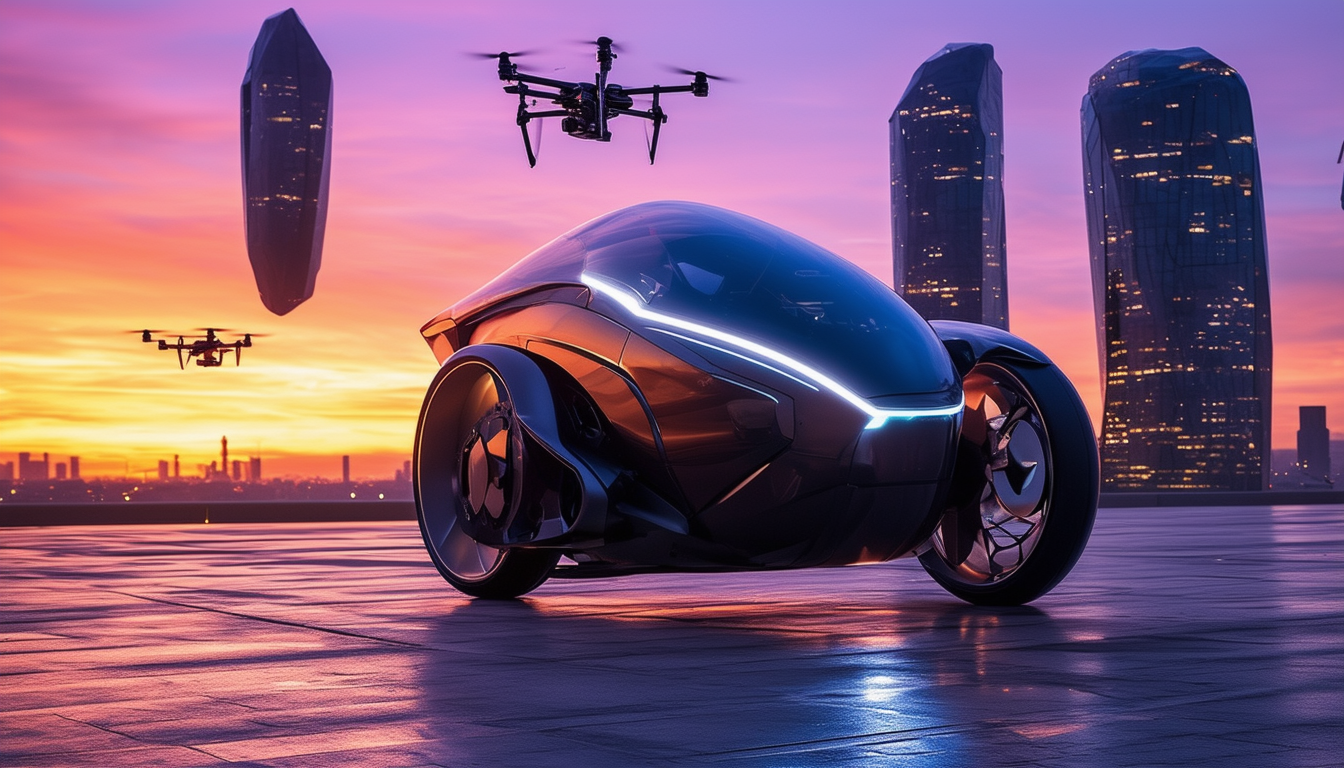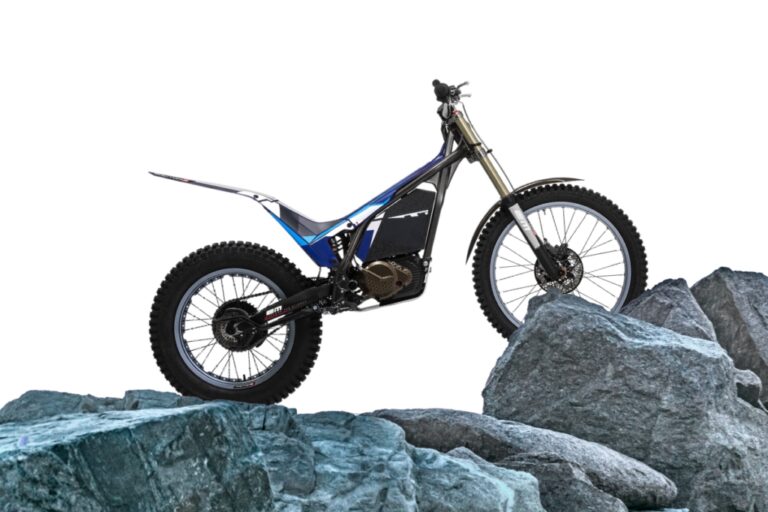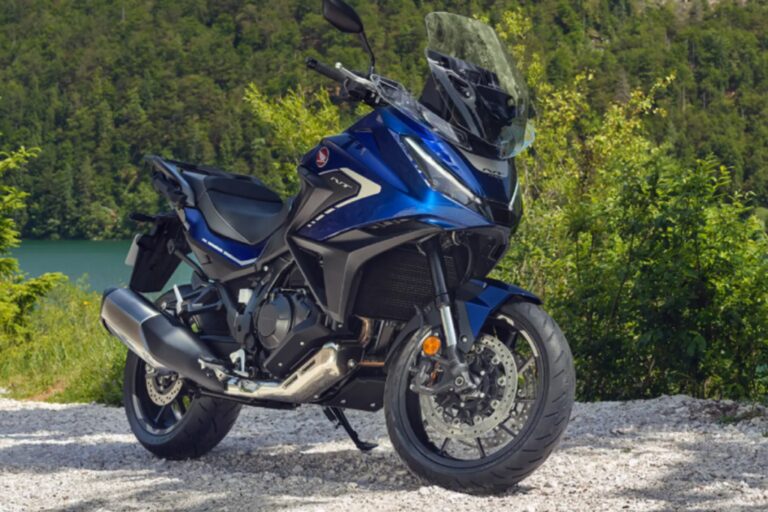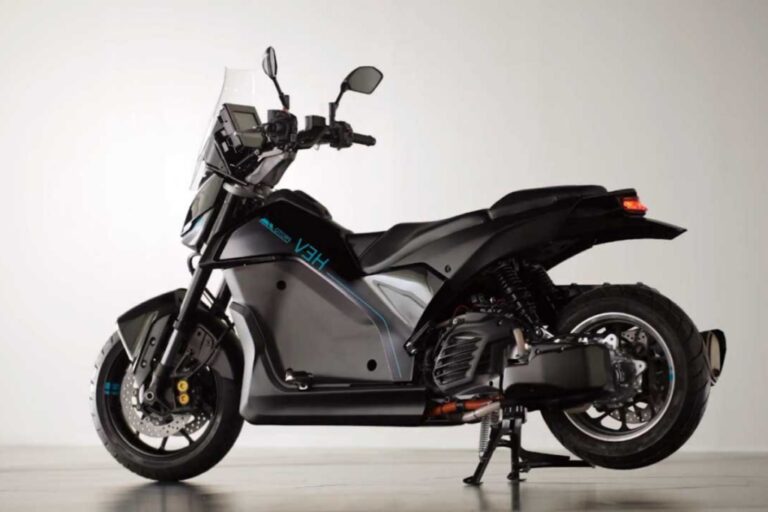Self-Flying Motorcycle Promises Autonous Takeoff and Landing

The latest innovation in transportation technology is capturing the attention of adventure enthusiasts and tech lovers alike: a self-flying motorcycle. This groundbreaking vehicle is designed to not only transform the way we travel but also promises autonomous takeoff and landing capabilities. With an aim to combine the thrill of motorcycle riding with the freedom of flight, this innovative mode of transport could redefine our journeys, allowing riders to bypass traffic and explore the skies with unprecedented ease.
The innovative Skyrider X1, touted as the world’s first amphibious flying passenger motorcycle, aims to revolutionize personal transportation with its autonomous takeoff and landing capabilities. Designed by Rictor, a division of the Chinese company Kuickwheel, this exciting vehicle promises a mix of exhilaration and convenience that could change the way we commute and explore. Its most notable feature includes the ability to operate without human intervention, providing users with an entirely new level of mobility.
Technological Marvel
The Skyrider X1 is a fascinating blend of motorcycle and aircraft technology. Constructed from carbon fiber composite and aviation-grade aluminum, it ensures a lightweight design that does not compromise durability. The vehicle is equipped with eight coaxial propellers that enable it to soar through the skies smoothly. Not only does it promise to navigate terrestrial roads like a conventional electric moped, but it can also take to the air, allowing users to escape congested traffic.
A Future of Autonomous Operation
One of the standout features of the Skyrider X1 is its autonomous operation. Users will simply select their destination, and the motorcycle takes care of the rest—automatically planning the optimal flight path and adjusting altitude, speed, and direction in real-time. Such technology makes commuting less stressful, as users can focus on their daily activities while the vehicle manages navigation and flight dynamics.
Flight and Travel Capabilities
This innovative vehicle promises a maximum flight speed of 62 mph (100 km/h), which is quite impressive for a passenger motorcycle. The flight duration, however, relies on the battery capacity. The base model comes with a 10.5-kWh battery, allegedly enabling around 25 minutes of flight. On the other hand, the upgraded version with a 21-kWh battery boasts a flight endurance of approximately 40 minutes. These features position the Skyrider X1 as a potential game changer for urban travel, allowing quick and efficient journeys above the gridlocked streets below.
Safety Features
Although the Skyrider X1 offers thrilling experiences, safety remains a key concern. Rictor has integrated multiple safety protocols into the design, including triple-redundant flight control systems to ensure safe operation even in the event of engine failure. Additionally, the motorcycle comes with an integrated emergency parachute, adding an extra layer of security for users in unforeseen situations.
Market Implications
With a projected price tag of around $60,000, the Skyrider X1 aims to bring practical flying transportation to consumers. However, skepticism surrounds its practicality given the leap from e-bikes to flying motorcycles without ample demonstrable prototypes or rigorous testing. While the concept of a personal flying vehicle could redefine transportation, it’s crucial to await further developments before getting too excited about its arrival in the market.
A Vision for the Future
As exciting as it is to glimpse at a flying motorcycle, the Skyrider X1 represents a major shift in personal mobility. This endeavor pushes the limits of current technology, blending your average motorbike experience with the thrill of flight. Whether this innovation will materialize into a regular mode of transport or remain a novelty is yet to be seen. Nevertheless, it ignites the imagination for a future where commuting is not bound by terrestrial limitations.
Self-Flying Motorcycle Promises Autonomous Takeoff and Landing
The future of personal transportation is evolving rapidly, with the introduction of self-flying motorcycles that boast capabilities such as autonomous takeoff and landing. This innovative vehicle is set to revolutionize how we commute, combining the thrill of motorcycle riding with the freedom of flight. The promise of these machines lies in their ability to navigate the skies safely and efficiently, opening up new avenues for adventure seekers and urban commuters alike.
The Technology Behind Autonomous Flying
The heart of a self-flying motorcycle lies in its advanced technology. Equipped with integrated systems that manage everything from flight controls to navigation, these vehicles can automatically plan optimal routes. The use of real-time weather data and environmental adaptability allows for seamless adjustments during flight, ensuring safety and efficiency.
Safety Features You Can Count On
Safety is a top priority for any flying vehicle. Most self-flying motorcycles are designed with triple-redundant flight control systems, which guarantee operational integrity even if one component fails. Coupled with an emergency parachute system, these features provide riders peace of mind whether in the air or on the ground. It’s essential to understand these mechanisms to appreciate the security they offer.
Operational Ease for Riders
These motorcycles aim to make flight accessible for everyone, even those without extensive aviation training. Their automated takeoff and landing functionalities allow you to set your destination and let the vehicle take care of the rest. For those who enjoy a hands-on experience, manual control options via a joystick are available, striking a balance between automation and personal input.
Preparing for the Transition to Flight
As exciting as it is to envision riding a self-flying motorcycle, transitioning from ground to air requires some preparation. Understanding the basics of aerodynamics and flight principles can enhance your experience and ensure you utilize the vehicle’s capabilities to their fullest. Additionally, familiarizing yourself with the necessary regulations and operational procedures will facilitate a smoother and safer flying experience.
The Future of Commuting
With self-flying motorcycles on the horizon, commuting may soon look drastically different. Imagine bypassing traffic by taking to the skies, or having the ability to explore breathtaking landscapes from a new perspective. These vehicles are designed not just for convenience, but also for adventure, encouraging a lifestyle that embraces exploration beyond the confines of roadways.






